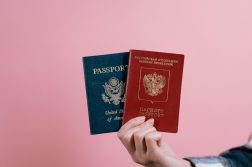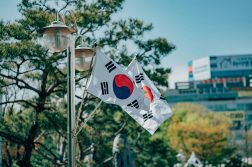Seventy-five years ago, on the 6th of August 1945 during World War II, a US bomber named Enola Gay dropped the first atomic bomb ever used in warfare on Hiroshima in Japan. The 15-ton bomb, nicknamed ‘Little Boy’, flattened four-square-miles of the city instantly, destroying 63% of its buildings and damaging 92% of them. Three days later on 9th August, the second and last nuclear bomb used in war was dropped on Nagasaki, causing more devastation. These blasts shaped the face of modern military production, and kickstarted both the Arms Race and the Cold War.
America began their work on creating atomic weaponry in 1940 after they heard that Germany was also doing so. By 1945, they had created the two bombs which would go on to kill around 220,000 Japanese citizens in the two cities both from direct impact and later from horrific injuries and radiation poisoning.
The decision to drop the bombs on Japan was taken as they had passed the Allies’ deadline on the 28th of July 1945 to admit defeat in the War after Germany’s surrender on the 7th of May. While it is true that the blasts were effective in ending WWII, with Japan finally surrendering on August 14th, it’s also possible that the US used the attack to showcase their military capabilities to the USSR. Indeed, four years later the Soviet Union tested their first nuclear weapon in 1949, and it’s more than likely that the bombings in Nagasaki spurred the Soviets’ efforts.
The blasts sent shockwaves across the globe. Innocent Japanese citizens – men, women and children alike – were killed instantly. Survivors were permanently damaged by blindness and other health conditions, including horrific burns. The victims, named hibakusha, were exposed to high levels of radiation that left them with an increased risk of cancer and malignant tumours later in life, as were any children they later conceived. The sights they saw in the fallout inevitably had a detrimental effect on their mental health as well, with rates of life-altering PTSD high among hibakusha.
In light of these horrors, it is debatable whether the bombings were justified. The Japanese were arguably the most brutal force operating during the Second World War, renowned for treating Allied prisoners of war atrociously through forced slave labour, starvation, torture and murder. If Allied troops had invaded Japan, they would have expected a horrendous death toll. In fact, my grandfather was stationed in the Far East when the bombs were dropped, and was due to fight in Japan if they had not surrendered. The brutal conflict which would have ensued may have meant many people, like myself, would never have been born. Having said that, it is horrific that so many innocent civilians were made to suffer and die, in order to bring the conflict to an end.
Indeed, the terrible effects of the bombings led to the birth of the anti-nuclear movement. The Federation of American Scientists (FAS) was formed to voice their concerns about the risks involved in using and producing atomic weapons, but they were initially overruled by the political imperative to win the arms race.
Later, however, some measures were put in place to limit nuclear threat. The Nuclear Test-Ban Treaty of 1963 prohibited the testing of nuclear weapons under water, in the atmosphere, or in outer space and was signed by the United States, the Soviet Union, and the United Kingdom, although this has since been broken. The three nations also signed the Treaty on the Non-proliferation of Nuclear Weapons in 1968, agreeing not to assist other states in obtaining or producing nuclear weapons. Nevertheless, these were not enough to avert the globally-prevalent fear in the Cold War that nuclear warfare between the western world and the USSR would spell the end of humankind.
Fears about atomic weaponry have far from dissipated today, as there are now 15,000 nuclear weapons worldwide. Combined, they have the capacity to kill billions. The International Red Cross has made a statement warning that it would be impossible for them to effectively respond to the use of another nuclear weapon, due to the catastrophic nature of the modern technology: ‘We are not talking about the possibility of another Hiroshima and Nagasaki, horrendous as they were. We are facing the prospect of something much, much worse.’
There is still significant backlash against the existence of nuclear weapons altogether, with the International Campaign to Abolish Nuclear Weapons (ICAN) winning the Nobel Peace Prize in 2017, although mutual disarmament by the nine countries who are known to have them is highly unlikely.
75 years after the most catastrophic bombings ever seen, Hiroshima is now a bustling business district with a population of 1.2 million. Miraculously, a domed building 175 yards from the bomb’s drop location in the city is still standing today. It has been named the Genbaku Dome and classified as a UNESCO World Heritage Site to serve as a permanent reminder of the War’s devastation, as well as a caution against the utilisation of atomic weaponry in future.



